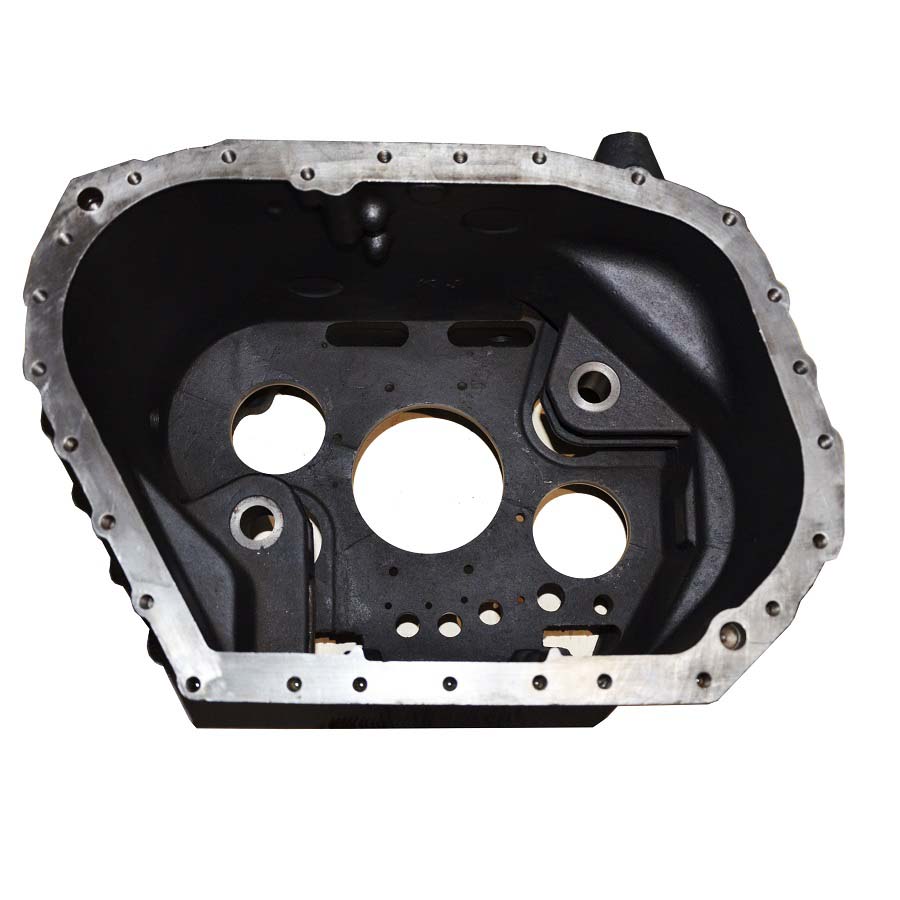
Lost Foam Casting Foundry
Material: Cast Gray Iron GG25 Process: Lost Foam Cast + Machining Weight: 5 kg Application: Heavy Duty Truck
Lost Foam Casting Foundry for cast gray iron with OEM custom and CNC machining services.
Description
Lost Foam Casting Foundry of Cast Iron and Cast Steel
Lost Foam Casting, also known as Full Mold Casting, or Cavityless Molding Casting, refers to a casting method that combines foam patterns with dry sand molding. The molten metal directly fills and replaces the space occupied by the original plastic mold, and directly obtains the required casting after cooling. The foam pattern is directly vaporized during the metal casting process, so the lost foam casting does not require mold removal. At most lost foam casting foundries, the commonly used pattern material is polystyrene.
Casting Capabilities for at RMC Foundry |
||||||
| Casting Process | Annual Capacity / Tons | Main Materials | Casting Weight | Dimensional Tolerance Grade (ISO 8062) | Heat Treatment | |
| Green Sand Casting | 6000 | Gray Cast Iron, Ductile Cast Iron, Cast Al, Brass, Cast Steel, Stainless Steel | 0.3 kg to 200 kg | CT11~CT14 | Normalization, Quenching, Tempering, Annealing, Carburization | |
| Resin Coated Sand Casting (Shell Casting) | 0.66 lbs to 440 lbs | CT8~CT12 | ||||
| Lost Wax Investment Casting | Water Glass Casting | 3000 | Stainless Steel, Carbon Steel, Alloy Steel, Brass, Aluminium, Duplex Stainless Steel, Cast Iron | 0.1 kg to 50 kg | CT5~CT9 | |
| 0.22 lbs to 110 lbs | ||||||
| Silica Sol Casting | 1000 | 0.05 kg to 50 kg | CT4~CT6 | |||
| 0.11 lbs to 110 lbs | ||||||
| Lost Foam Casting | 4000 | Gray Iron, Ductile Iron, Alloy, Carbon Steel, Stainless Steel, Brass, Al | 10 kg to 300 kg | CT8~CT12 | ||
| 22 lbs to 660 lbs | ||||||
| Vacuum Casting | 3000 | Gray Iron, Ductile Iron, Alloy Steel, Carbon Steel, Stainless Steel | 10 kg to 300 kg | CT8~CT12 | ||
| 22 lbs to 660 lbs | ||||||
| High Pressure Die Casting | 500 | Aluminium Alloys, Zinc Alloys | 0.1 kg to 50 kg | CT4~CT7 | ||
| 0.22 lbs to 110 lbs | ||||||
▶ Raw Materials Available for Lost Foam Casting (LFC):
- Carbon Steel: AISI 1020 - AISI 1060,
- Steel Alloys: ZG20SiMn, ZG30SiMn, ZG30CrMo, ZG35CrMo, ZG35SiMn, ZG35CrMnSi, ZG40Mn, ZG40Cr, ZG42Cr, ZG42CrMo...etc on request.
- Stainless Steel: AISI 304, AISI 304L, AISI 316, AISI 316L and other stainless steel grade.
- Brass & Copper.
- Other Materials and Standards on request
▶ Capabilities of Lost Foam Casting
- Max Size: 1,000 mm × 800 mm × 500 mm
- Weight Range: 0.5 kg - 100 kg
- Annual Capacity: 2,000 tons
- Tolerances: On Request.
▶ The Steps of Lost Foam Casting:
- Use foam molds to produce foam patterns and casting gating systems
- Bond the patterns and runners to form a mold bundle module
- Dip paint on the module
- Dry the paint
- Put the module into the sand box and fill it with dry sand
- Vibrate molding in order to fill the cavity with dry sand and then compact the molding sand
- Pouring molten metal to vaporize the foam and then forming the desired castings
- After the castings have cooled, clean the castings. The dry sand can be recycled
▶ Advantages of Lost Foam Casting
- Lost foam casting is a near-net shape casting method. The dimensional tolerance of the casting can reach CT6~CT9, and the surface roughness is Ra=6.3~50 μm. The shape of lost foam castings can be comparable to resin sand castings.
- Lost foam casting can produce castings with complex shapes and complex cavities. Compared with the resin sand process, the more sand cores are replaced, the greater the profit margin of lost foam casting. The core competitiveness of lost foam casting is the production of difficult castings with complex inner cavities, such as engine block, engine head and box, etc. These characteristics make the superiority and economic benefits of lost foam casting fully appear, and realize the lightweight and precise casting.
- Lost foam casting does not require mold removal, which provides greater freedom for casting design and casting process. In terms of process design, the lost foam casting process is first broken into parts and then spliced into a whole, and then the lost foam process is used for integral casting, so that the lost foam casting has the competitive advantage with the traditional sand casting.
- The use of lost foam casting process can greatly reduce labor intensity, reduce the generation of solid waste, and the used dry sand can be recycled. This feature meets the requirements of energy saving and emission reduction, and has changed the harsh environment of traditional sand casting.
 русский
русский



